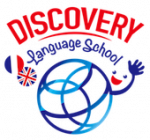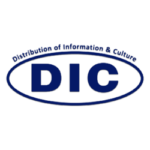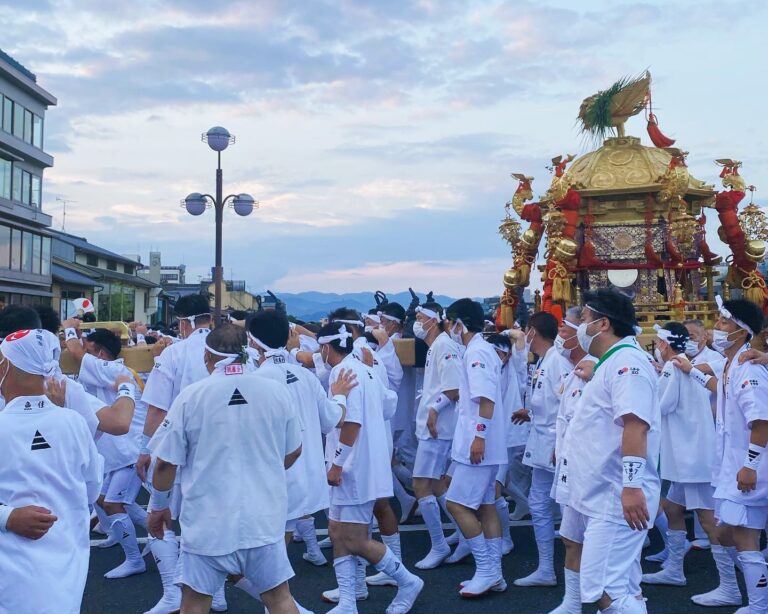
Under the heat of the July sun, Kyoto’s streets filled with life. The air was thick and humid, but the allure of the festivities drew everyone out of the cool oasis of air-conditioned indoors.
As the sun descended, casting a golden glow across the city, a slow beat of the drum and the trill of a flute hushed the crowds. All eyes turned toward the distance, eager to catch the first glimpse of the procession.
Then, like a well-rehearsed symphony, a harmonious cacophony of sounds filled the air. The wooden wheels of the floats clanked against the concrete, creating an enchanting rhythm. The metal swords scraped the ground with a sharp hiss, and the collective hooting of the men carrying the large portable shrines, or mikoshi.
It was a grand spectacle. The mikoshi, adorned with vibrant tapestries, shifted down the streets as the parade wound to the heart of Kyoto, where the traditional Yasaka Shrine sits nestled in cold urban city streets.
As the evening painted the sky in hues of pink and orange, the parade finally reached its destination.

What is Gion Matsuri?
Gion Matsuri is one of Japan’s most famous annual festivals held in Kyoto. It is a month-long celebration that takes place in July, with its main events occurring on July 17th. The festival has a history spanning over a thousand years and has become a significant cultural tradition for the city of Kyoto and its residents.
The Gion Matsuri features various events and attractions throughout the month, but the main highlight is the Yamaboko Junko (parade of floats) on July 17th. The parade consists of elaborately decorated, large wooden floats known as “yamaboko.” These floats are pulled through the streets of Kyoto by teams of men dressed in traditional attire.
Wooden boxes carried by men dressed in white are called “mikoshi.” Mikoshi are portable shrines that play a significant role in many Japanese festivals, including Gion Matsuri. They are believed to house the spirits of the deities from local shrines, and during the festival, these mikoshi are paraded through the streets to bless the neighborhood and bring good fortune.
The mikoshi used in Gion Matsuri are decorated elaborately with intricate designs and adorned with various ornaments. They can be quite heavy, so a team of men, often wearing traditional white attire, carries them on their shoulders using special wooden poles.
The men carrying the mikoshi move in unison, swaying the shrine rhythmically as they walk through the streets. This swaying motion is believed to spread the divine energy of the spirits inside the mikoshi and bless the surrounding area.

What is the history of Gion Matsuri?
In 863, an ancient ritual called Otabisho occurred at the Shinsenen Garden in Japan. People believed this ritual could calm the spirits of those who died from a deadly plague. The Otabisho festival aimed to appease epidemic deities and vengeful spirits believed to haunt the living. Because of frequent outbreaks of diseases, they also conducted ceremonies to pray for good health, enshrining the deity Gotobu Tenno.
However, a series of natural disasters followed, including the eruption of Mount Fuji in 864 and a devastating earthquake in 869 that caused tsunamis and widespread movements in Japan. In response to social unrest, the onmyoji, led by Urabe no Hiramaro, set up 66 spears representing a province to protect the regions from impurities and evil spirits. They also performed the Otabisho ritual, which eventually became the foundation for the Gion Festival. This remarkable festival has been celebrated for over 1150 years, originating in ancient ceremonies.
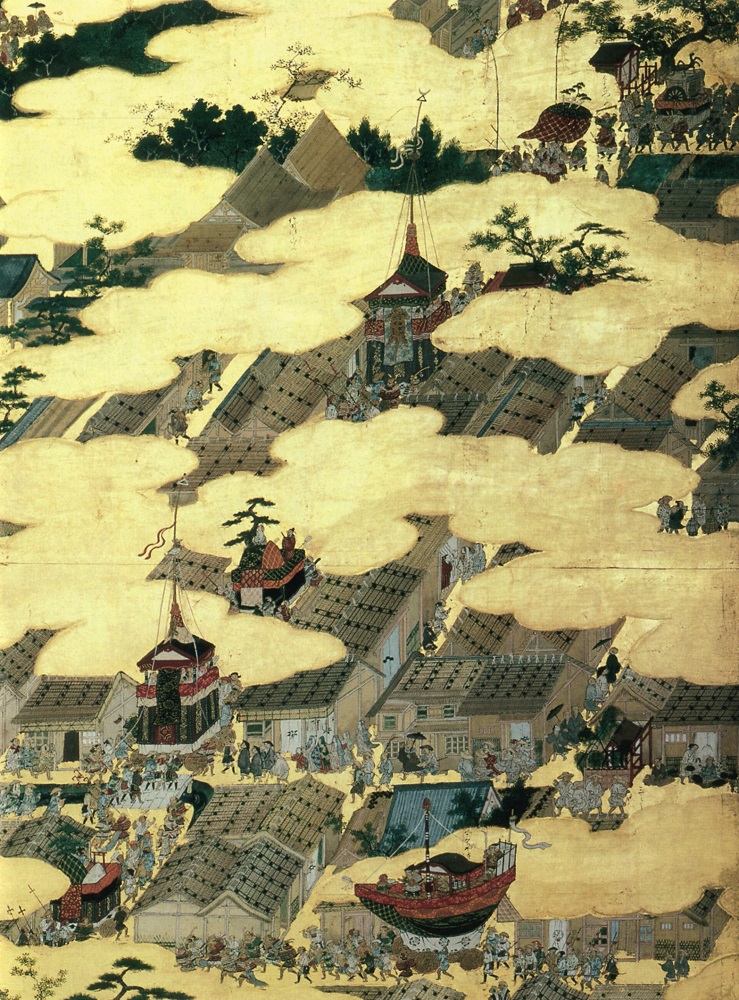
A picture of the Gion-e depicted in the Rakuchū rakugai-zu folding screen by Eitoku Kano (National Treasure, Uesugi Museum, Yonezawa City)
The need for the Otabisho ritual arose due to harsh living conditions in Kyoto, with high temperatures, humidity, and inadequate sanitation causing outbreaks of deadly diseases like malaria, smallpox, influenza, dysentery, and measles. People attributed these diseases to vengeful spirits, including Prince Sawara, who died while protesting his innocence during the abandoned construction of Nagaoka-kyo.
The Otabisho rituals, blending Shinto and Buddhist practices along with onmyodo and Shugendo elements, were held annually starting from 970. They aimed to combat infectious diseases that were particularly common during the hot summer months when refrigeration and clean water were scarce.
In 876, the deity Gotobu Tenno was moved to Kyoto’s Yasaka Shrine, known as Gionsha, under Mount Hiei Enryakuji. Throughout the medieval period, Gionsha played an important role in controlling the city during the Hiyoshi Gongoen’s Sanno Festival. This sometimes led to suspending or postponing the Gion Otabisho ritual to align with the Sanno Festival.

Illustration of the Sanno Festival (Sanno Gosairei-zu)
The central element of the Gion Festival has always been the Mikoshi procession of Gionsha. The current style of Yama and Hoko floats originated from a description in the “Kadonomiya Emperor’s Diary” dated July 24, 1321, during the Kamakura period. Drummers would perform elegant dances around the floats, and wealthy merchants competed in rhythmical performances during the Nanboku-cho period. This led to the creation of the Yama and Hoko procession, as depicted in the “Rakuchu Rakugai-zu” illustrated handscroll from the mid-Muromachi period.
The Gion Festival faced challenges over the centuries, including cancellations during the Onin War and significant damage from major fires. A series of calamities, especially a massive earthquake and tsunami in 1498, likely contributed to the revival of the festival. To reconstruct the festival, Yoritoshi Matsuda, an official of the Muromachi shogunate, gathered information about the previous Yama and Hoko floats from “Gionkai Yama Hoko Goto” (Yasaka Shrine documents), which is considered the only historical record of 60 floats (32 in the preceding festival and 28 in the latter festival) before the Onin War.
In 1533, due to complaints from the Enryakuji temple, the Gionsha festival was forced to be canceled. However, the townspeople issued a statement declaring, “Even without the Shinto rituals, we still want to perform the Yama and Hoko procession.” This indicates that the Yama and Hoko processions had already become primarily a festival organized by the townspeople.
During the Tenbun Hokke Ikki uprising, despite the shogunate’s order to stop the Gion Festival in cooperation with Enryakuji, the Yama and Hoko procession took place against the prohibition on the religious aspect. This incident symbolizes the autonomous nature of the townspeople.
During the Edo period, the Gion Festival suffered significant damage from Kyoto’s three major fires. The 1708 “Ho-e” fire was followed by a swift recovery due to the relatively simple design of the Yama and Hoko floats. However, the 1788 “Tenmei” fire caused substantial damage, and it took 50 years to rebuild the “Hoko” float called “Kanbukihoko.” The subsequent revival of the floats saw them grow in size and adorned with more elaborate decorations, taking advantage of the cultural wave during the Kyoho and Bunka periods.
After the Meiji Restoration, the “Yamaboko-junko” system, which supported the Yama and Hoko processions, was abolished, and the festival’s survival was at risk. In addition, the Gion Festival was also affected by cholera outbreaks which caused the postponement of the Gion Festival in 1886, 1887, and 1895. However, Japan was eager to overcome cholera and appeal as a civilized nation with proper sanitation management, leading to various measures, such as restrictions on waste transportation and food safety warnings.
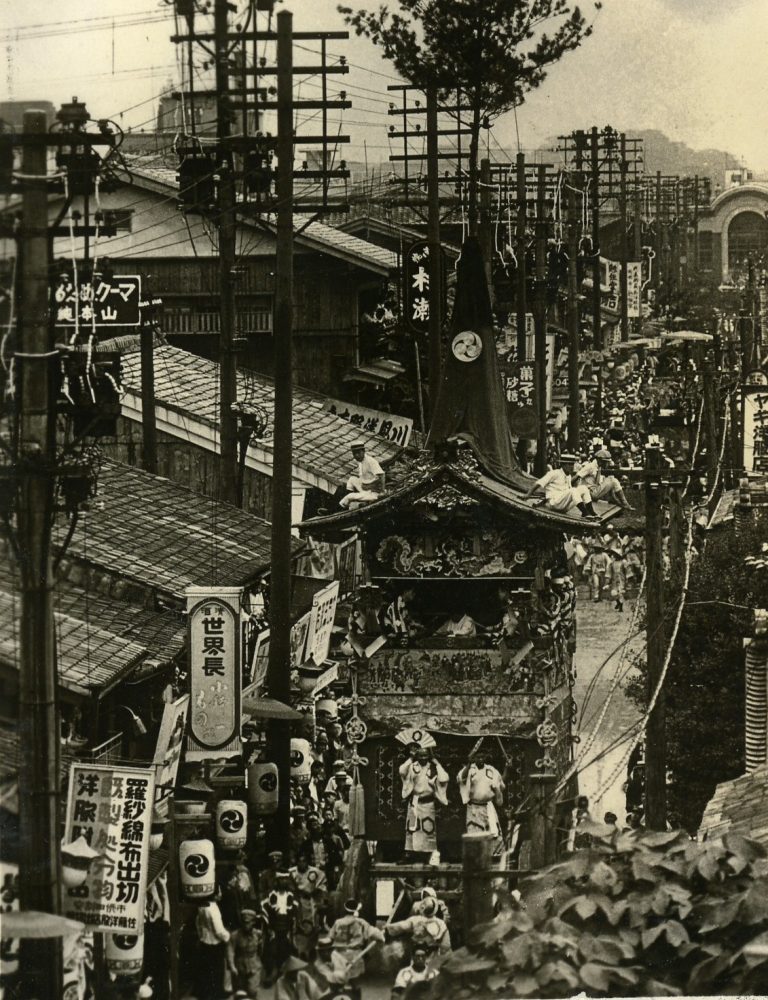
Gion Matsuri in the 1920s
Despite changes in the parade route and interruptions due to World War II (1943-1946), the festival survived and made a comeback. The post-war period saw challenges in traffic conditions during the rapid economic growth, leading to the integration of the preceding and succeeding festivals into a combined procession (1966-2013). However, from 2014, the succeeding festival was revived, and efforts to preserve traditional practices continue, boasting over 1150 years of history for the Gion Otabisho.
Today, the Gion Festival remains grand, attracting many people during the “Yoiyama” on the eve of the Yama and Hoko procession. Though the central area of Kyoto has experienced depopulation, efforts have been made to encourage new residents to join the Yama and Hoko preservation associations, contributing to the festival’s continuity and preserving its rich history.
What are the big floats that are used in Gion Matsuri?
The yoiyama parade features floats divided into two groups: hoko and yama.
The larger “hoko” (halberd), which are typically around 12 tons and require 30-40 to pull them through the streets with two men pioting the wedges. The smaller “yama” (mountain) typically weighs around 1,200-1,600 kg with 14–24 people to pull, push, or carry the floats. Collectively they are known as “yamaboko.”
There are ten hoko, representing the 66 halberds or spears used in the original purification ritual, while the 24 yama carry life-sized figures of Shinto deities, Buddhist bodhisattvas, and cultural figures.
These floats are adorned with diverse tapestries, some crafted in Nishijin, Kyoto’s traditional textile-weaving district, and others imported from around the world. During the procession, musicians sit on the floats playing drums and flutes while ropes pull the floats down the street and throw good luck favors to the crowd.
On the evening of July 17, hundreds of men carry Yasaka Shrine’s resident deities in portable mikoshi shrines, parading through various neighborhoods to the otabisho, a temporary dwelling in central Kyoto. This ritual purifies all the neighborhoods along the way, and the deities reside at the otabisho for a week, between the two floats’ processions.
On the 24th, they return to their permanent dwelling at Yasaka Shrine, stopping at Shinsen-en, the original site of the first rituals in the year 869, during the procession. The Mayor of Kyoto wears the robes of a magistrate during the special ceremony that presents the lots at the commencement of the processions.
The Naginata Hoko depicts a chigo, a sacred page of a deity chosen from merchant houses in Kyoto, wearing ceremonial robes and a golden phoenix. He undergoes several weeks of special ablution ceremonies and lives in isolation to avoid contamination before the festival. At the beginning of the yamahoko on July 17, the chigo cuts the shimenawa with a swing of his sword.
What can I do during the Gion Matsuri?
Surprisingly, the most anticipated events of Gion Matsuri unfold not in the Gion district but on the opposite side of Kamogawa (the main river through Kyoto). In the days leading up to the procession, the yama and hoko floats are displayed within a half-kilometer radius of the Karasuma and Shijo streets intersection. Curious guests can even step inside some of these floats while they are on exhibit.
As twilight descends, the area transforms into a bustling hub of excitement, shutting down traffic from 6:00 PM to 11:00 PM. The streets come alive with an array of food stalls, drink vendors, and other quintessential festival attractions. These vibrant pre-procession nights are known as Yoiyama (July 16), Yoiyoiyama (July 15), and Yoiyoiyoiyama (July 14). Similar festivities, albeit on a smaller scale with fewer road closures and stands, take place three evenings before the procession on July 24.
The processions of floats, known as Yamaboko Junko, fill the streets between 9:00 AM and 1:00 PM on the 17th and from 9:30 AM to 11:50 AM on the 24th. The floats follow a three-kilometer route along Shijo, Kawaramachi, and Oike streets, setting off from Shijo-Karasuma on the 17th and from Karasuma-Oike on the 24th.
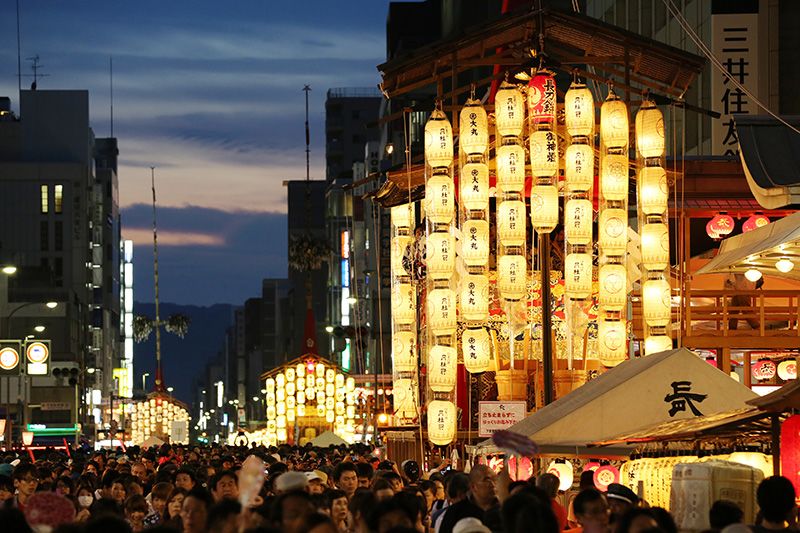
Gion Matsuri boasts other events that, while they may not rival the grandeur of the processions, are equally enjoyable. Between July 10 and 14 (and from July 18 to 21 for the second procession), visitors can watch the assembly of the floats, an impressive feat accomplished each year without the use of nails. Coinciding with the Yoiyama days, the Byobu Matsuri sees local residents opening their front doors and proudly displaying family heirlooms to passersby.
The mikoshi procession starts at 6:00 PM on the 17th at Yasaka Shrine, culminating at the Otabisho.
A mikoshi is a portable Shinto shrine used in traditional Japanese festivals and ceremonies. It is essentially a miniature replica of a shrine building, often covered with elaborate decorations and symbols. The word “mikoshi” can be broken down into “mi” (sacred) and “koshi” (palanquin or litter), reflecting its sacred purpose and the way it is carried.
This event involves carrying the shrine’s revered deity out of its sacred grounds and parading it through the town in a beautifully adorned mikoshi hoisted on the shoulders of local men. On the 24th, the mikoshi is reverently returned to the shrine, as described in the opening of this article, completing this awe-inspiring display of devotion and tradition.
For those who may not be able to visit Kyoto and see the festival, feel free to watch videos here:











